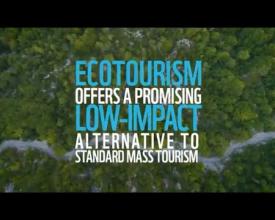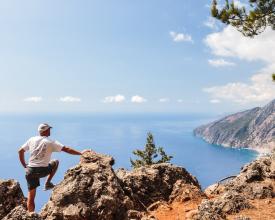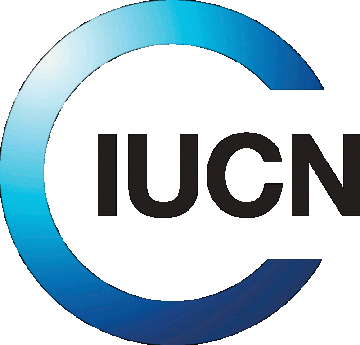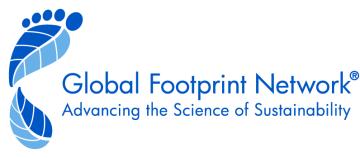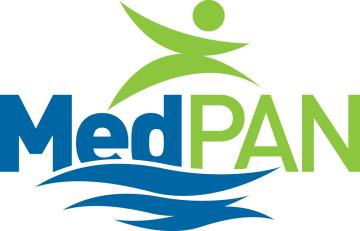MEET Network: Ecotourism Development in Mediterranean Protected Areas
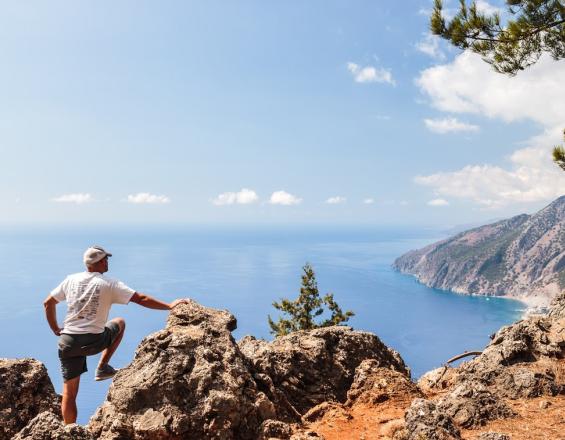
The Mediterranean Experience of Ecotourism (MEET) Network is an association of Protected Areas based in the Mediterranean Basin that is dedicated to strengthening conditions for the region to become an internationally recognised ecotourism destination. Formally established in 2018, MEET is born out of two EU-projects which ran from 2013. Through these projects the association has established a unique approach to ecotourism development that embraces local, cultural and natural values in Mediterranean Protected Areas. The MEET approach encourages public and private stakeholders from the conservation and tourism sectors to work together and build ecotourism products that put the Protected Area at the heart of the ecotourism experience and benefit local communities.
Over the last 5 years, more than 40 Mediterranean Protected Areas have tried and tested this approach with MEET´s hands-on support, providing essential capacity building, advocacy and development tools to ensure successful results.
Context
Challenges addressed
Barriers to Ecotourism Development in Mediterranean Protected Areas:
-
A lack of cross-sector collaboration and community integration between conservation and tourism sectors.
-
Despite the existence of several standard, certifications and indicators for sustainable tourism, the ecotourism sector lacks tools which provide evidence based solutions and would allow operators and protected areas to improve the quality and sustainability of their products.
-
Increased market orientation is needed as currently small-scale tourism products and itineraries in PAs are generally supply-led or born out of unplanned initiatives, rather than responding to market demands and planned processes.
-
In cases where ecotourism products are developed they then often struggle to reach the market due to lack of resources and capacity at a local level and the deterring competition from silos and other competitors who dominate the market.
Location
Process
Summary of the process
The four building blocks of the MEET approach to ecotourism development are implemented by the protected area and other key stakeholders with the support and guidance of MEET Network every step of the way. MEET has also developed a series of tools to support the implementation of it´s approach including:
MEET Manual: This is a step-by-step guide for the MEET ecotourism development approach.
MEET Online Trainings: MEET recently launched two online training modules on the ecotourism product development process and how to measure the ecological footprint of the product, to train interested stakeholders and potential members. This new online tool is free to use and can be found on www.conservationtraining.org .
Ecological Footprint Calculator: The calculator is a key part of the measuring and monitoring element of the approach. It is freely available on-line for all protected areas to use. As mentioned above MEET has also developed an online training to support the use of this tool.
MEET catalogue: The MEET catalogue was finalized for the season 2020/2021 and being promoted B2B in international fora (ATTA, ITB, WTM) and individually by MEET and the commercial partners.
Building Blocks
PARTICIPATORY PLANNING
Establishment of a Local Ecotourism Cluster (LEC) is one of the key elements of the participatory planning element of the MEET approach.The LEC is a public-private tourism cluster and is usually initiated by the protected area and is composed of relevant multi-sector stakeholders. This group works collaboratively to develop and manage the ecotourism product according to a common vision.The LEC creates opportunities for synergy and ensures alignment of core principles amongst those involved, ultimately helping to ensure a successful product.
Enabling factors
The MEET Manuel breaks down this participatory planning element of the MEET Approach and explains best practices for establishing the LEC.
MEET Members usually capacity building in the form of trainings and additional support from MEET Network to implement the LEC.
Lesson learned
- Perspective of the private sector stakeholders has to be included from the beginning in all the steps of development
-
Make sure every voice is heard: Holistic vision beyond economic benefit
-
Coordinate and look for the support of regional/national tourism authorities
Resources
DEVELOPING THE ECOTOURISM PRODUCT
With a common vision established through the Local Ecotourism Cluster the next step is to develop a MEET ecotourism product. MEET ecotourism products aim to highlight, promote and preserve the features unique to the protected area destination, whilst also highlighting local natural, historical, culinary and other strengths. Each product is developed around a four-component structure of attractions, facilities and equipment, services and activities and each component within the product is then assessed to ensure a high standard of quality and sustainability.
Enabling factors
The MEET Manual and Online Training Module on conservationtraining.org both explain and can be used to train interested stakeholders on how to adopt the MEET ecotourism product development approach in their destination.
Lesson learned
- Have tangible goals with clear economic opportunity
- Storytelling and a theme are key to a successful ecotourism product
- Never forget the core objective of the park: conservation!
MARKET ORIENTATED
The core differentiator of MEET ecotourism products is that they are based in and feature Mediterranean protected areas. This is integrated with local communities and local service providers, thereby creating a unique niche-market product in the Mediterranean that supports conservation. Building off what differentiates its products to others on the market, MEET is building a strong brand with embedded market value for both inbound and outbound tour operators, as well as, destination management organisations.
Enabling factors
The MEET Network is currently working to develop an online training on the marketing and commercialisation component of the MEET approach, so interested stakeholders across the Mediterranean can adopt it´s methodology. In the meantime, the MEET Manual contains information on this element.
Lesson learned
-
Perspective of the private sector stakeholders has to be included from the beginning in all the steps of development;
-
Define clear business plans post project, including promotion and sales.
SUSTAINABILITY & QUALITY
MEET ecotourism products must satisfy a minimum criteria of sustainability and quality to be included in the MEET Catalogue. This criteria is measured and monitored against a specific set of indicators. The process is also supported by MEET tools such as the Ecological Footprint Calculator - used to measure environmental impact. MEET members commit to this monitoring on a continuous basis to ensure continued improvement of the products. MEET is currently expanding the criteria to also measure socio-economic, conservation, governance impact of ecotourism products.
Enabling factors
The MEET Ecological Footprint Calculator, developed during Interreg-Med DestiMED project, provides the necessary tool for protected areas and others involved to measure the ecological footprint of their ecotourism product.
Furthermore, to support the use of this tool, MEET recently developed an online training module on using the calcultor. to This online training module is avaialble on www.consevationtraining.org.
Lesson learned
- Ensure those involved understand the value of this measuring and monitoring from the start, as it can seem like a big undertaking initiaitlly.
Impacts
- Strengthened relationships in protected area destinations through the development of Local Ecotourism Clusters which brings together a group of tourism and conservation stakeholders to develop and manage ecotourism in the Protected Area.
- Over forty quality ecotourism experiences have been developed so far under the MEET Approach for ecotourism development based on good governance, quality experiences and evidenced sustainability.
- Developed methodology for evidencing sustainability of ecotourism, through impact monitoring tools such as the MEET DestiMED Ecological Footprint Calculator MEET is paving the way to provide Protected Areas with the tools to measure and monitor the environmental and social impact of ecotourism on the park and its surrounding communities. This monitoring gives more credibility to the tourism offer through evidenced sustainability and allows the Protected Area to continuously improve the quality and sustainability of their ecotourism experiences.
Beneficiaries
Protected Area Communities (these figures are estimates):
46 Protected Areas
92 Protected Area Staff
368 Local Service Providers (hotels, tour guides etc.)
46 Inbound tourism operators
92 Local and regional authorities
Sustainable Development Goals
Story
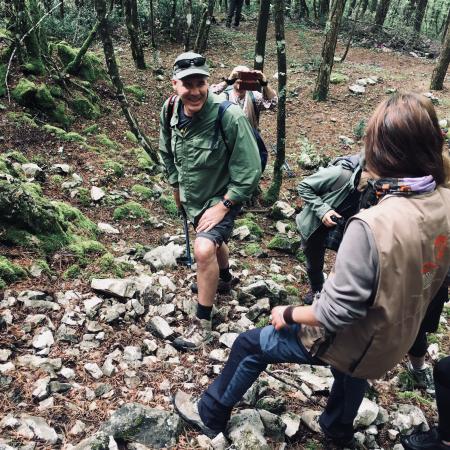
Stories from MEET Protected Areas
Colline Metallifere Tuscan Mining Geopark
Thanks to MEET standards and DestiMED participatory trainings and the professional experts of the network, we are becoming more and more aware of the eco-tourism markets and customers’ expectations, and able to develop ecotourism products in a professional way. Reducing our tourism impact.
Through MEET Network our Protected Area has developed a strong partnership with a local tour operator called, "Travel Today T.O." (www.travetoday.it ), that is growing up with us, and is now our reliable and green commercial partner.
The Ecological Footprint Calculator that MEET developed is a powerful and innovative tool, and carbon footprint data it provides is giving us the opportunity, as well as, our service providers, tourists and visitors to be aware of their impact and gives them the possibility to reduce it and compensate it with tangible actions.
All this is now leading us to have more than 20 ecotourism experiences, spanning from half day to many weeks, that are completely based around supporting local businesses and our local community (www.visitmaremma.net). – Alessandra Casini, Park Director at Colline Metallifere Tuscan Mining Geopark
Vlora, Shkodra & Divjake-Karavasta Parks, Albania
We were presented with the concept of LEC by MEET Network while setting up our tour package proposals. The idea stands in the fact that we want to bring visitors in Protected Areas around Albania (Vlora, Shkodra and later on Divjake-Karavasta). We would have hardly had the very positive results we had and the great enthusiastic feedback by sustainable tourism specialists, without us implementing the sort of communication and decision making that was made possible by the collaboration of all sorts of different actors in the preparation.
We have learnt absolutely great lessons through MEET and we definitely see the value in applying the MEET approach to our work on conceiving more travel experiences for our clients in Protected Areas and National Parks. As a result of MEET, we are now careful to consider and put together a Local Economical Cluster which really makes it possible for everyone to get involved and to have as many people as possible profiting from the ecotourism experiences. Many thanks MEET! - Elton Caushi, Inbound Tour Operator, Albanian -Trip
